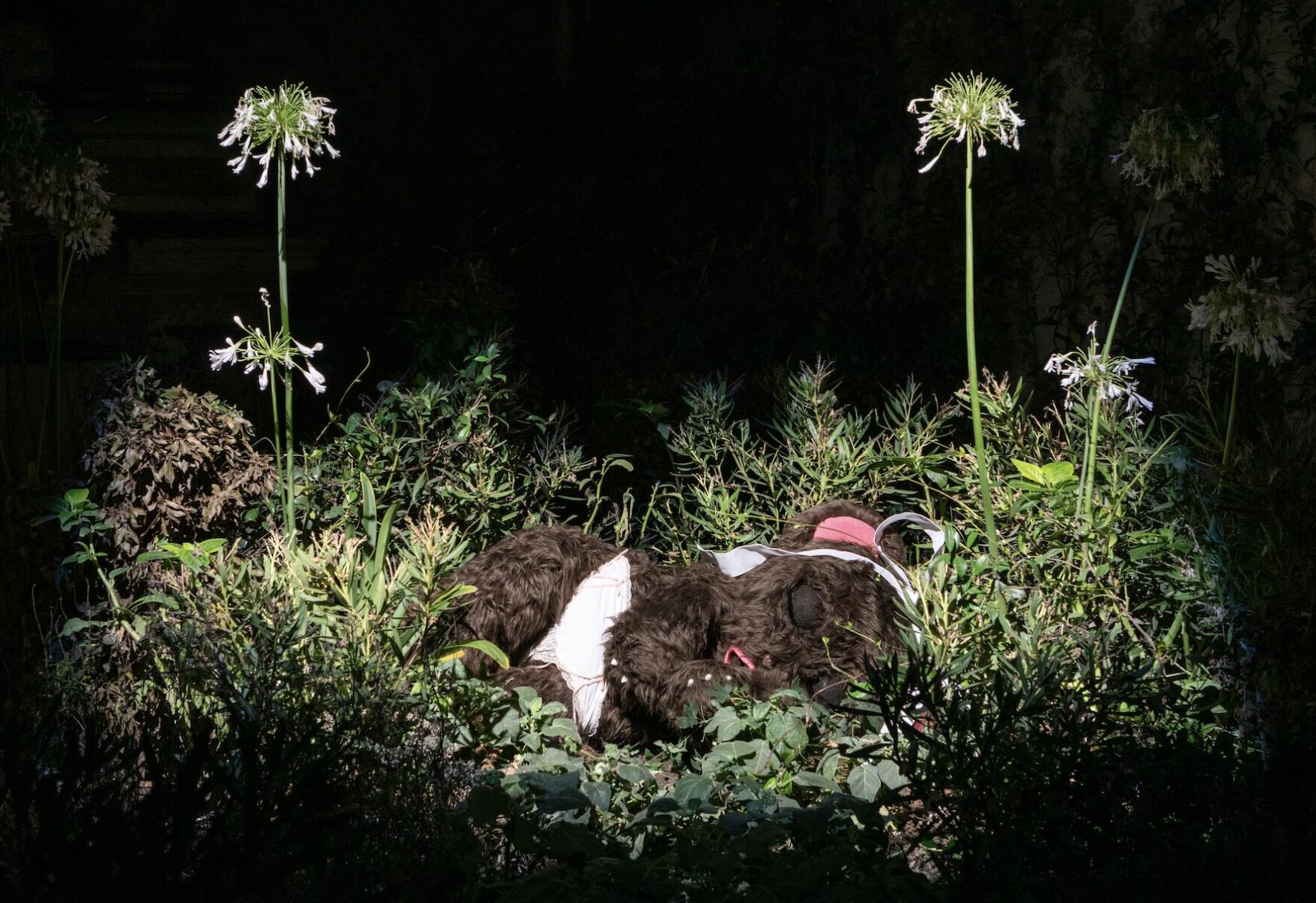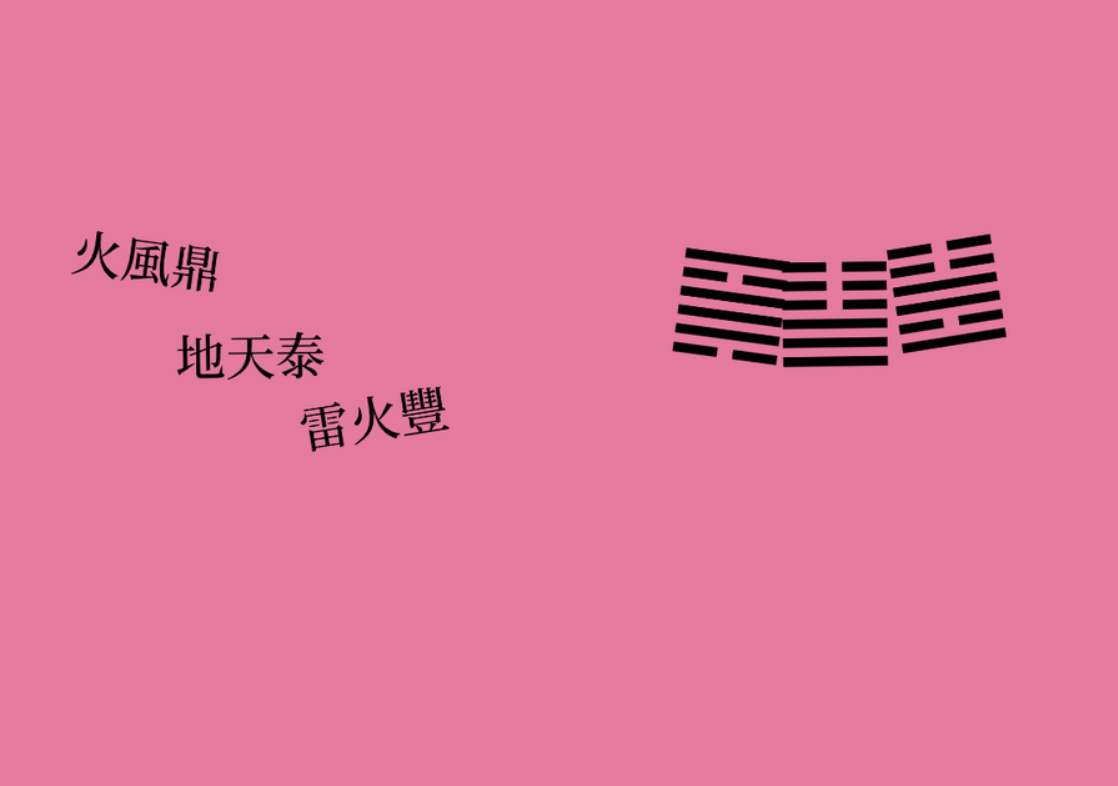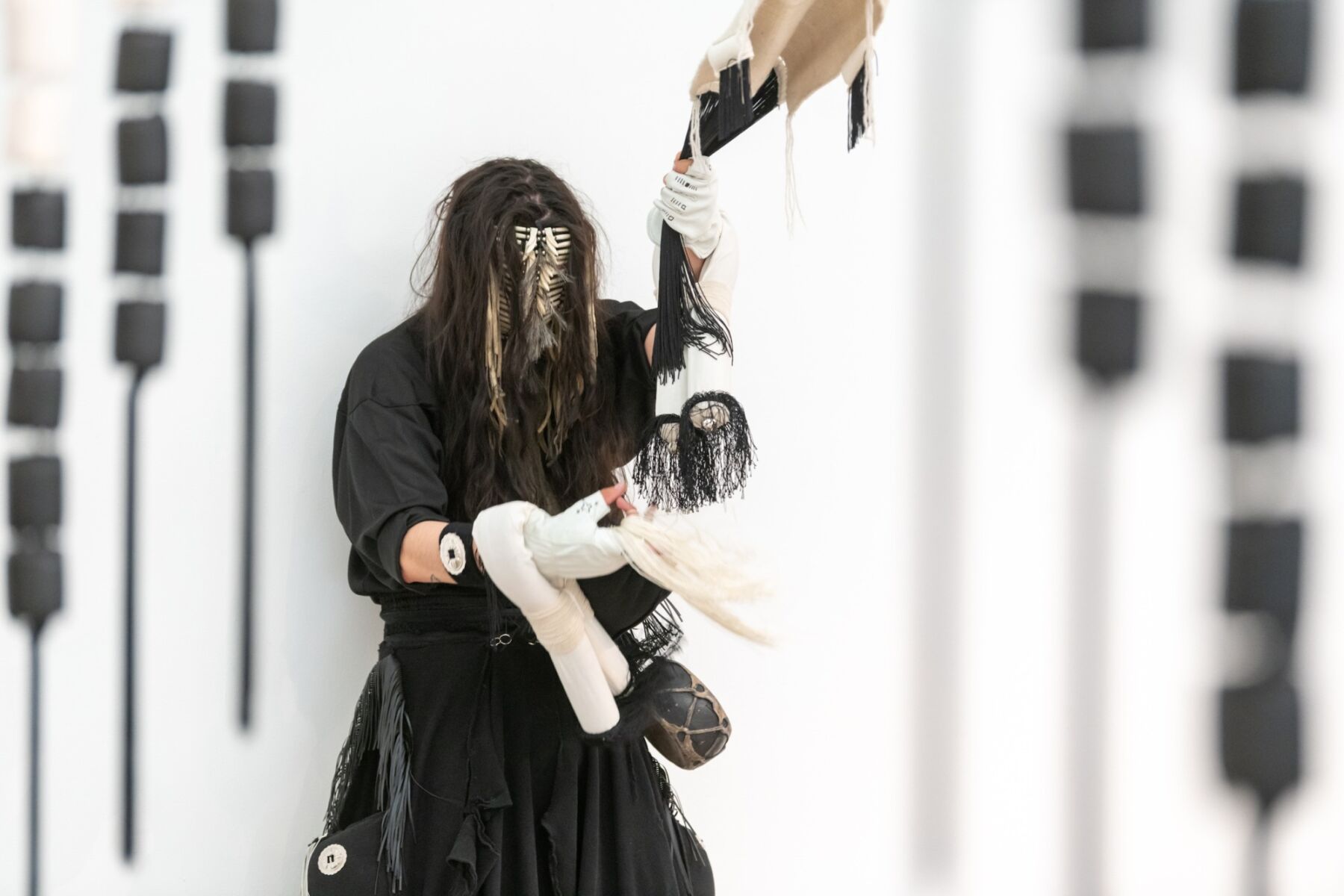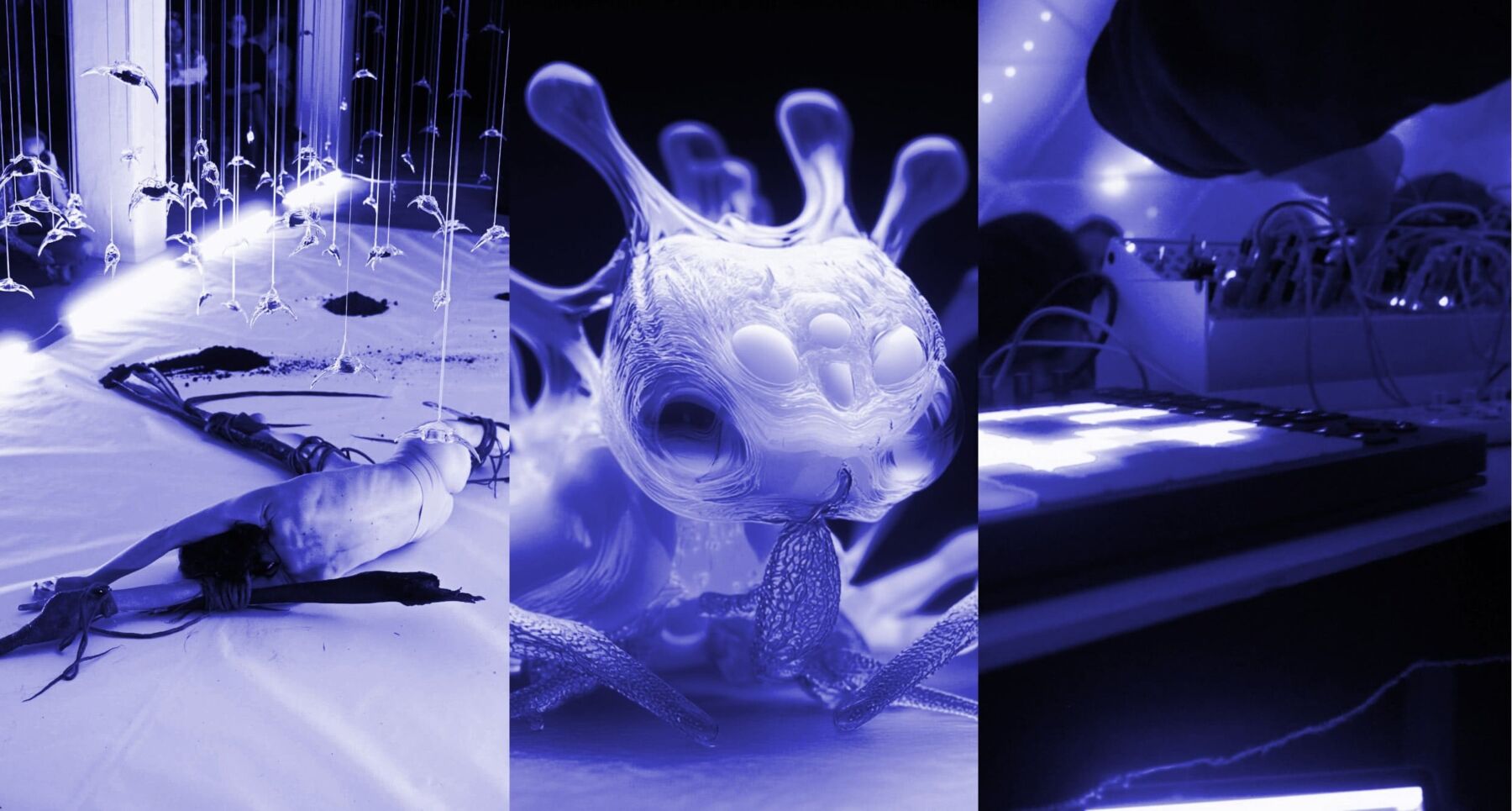Interview by Allan Gardner

Studio Drift was founded in 2007 by Lonneke Gordijn and Ralph Nauta. Their work explores the relationships between humans, nature and technology through various methods, most often manifesting as a variation on sculpture or installation. The work is catalysed by a desire to explore nuance, aesthetics and experiential aspects of viewership relating to the intersection of Gordijn’s fascination with nature and Nauta’s with science fiction and technology – most often leading to the production of works that inhabit site-specific spaces in uncanny fashions.
Drifter, one of the studio’s most well-known pieces, plays with these relationships visually arrestingly. Consisting of a four-by-two-by-two-meter concrete-like cuboid floating within a three-sided white enclosure, the site-specific piece defies physics with no visible supports or mechanisms in place. This is where the dichotomy between Gordijn and Nauta’s explorations can find its particular ability to encourage the re-examination of space.
The block appears to be concrete; if a block of its size is concrete and can float in a seemingly unassisted manner within a gallery space, gravity is being challenged. Gravity, as we understand it, cannot be present in that space.
We are put into a position where either the existence of gravity is questioned or our understanding of gravity is subverted through human-made technologies. The assumed physicality of our living space is interrogated in a way that creates a sense of lightness within the viewer, as well as a sense of awe – the use of scientific methods to produce an unnatural state of being and our human connection to our environment providing the tools through which to parse it, both consciously and unconsciously.
In 20 Steps, a recent piece also shown in conjunction with Iris Van Herpen’s Syntopia collection, Studio Drift explores the human desire to fly through the construction of twenty delicate glass wings, representing the physical steps of flight in an abstract form.
The installation indicates the relationships that the studio was founded to explore, the idea that through the use of contemporary technologies, we could come to satisfy our fascinations with or experiences of the natural world. It appears to exist with a desire to push back against our inherent physical limitations to empower the human experience through the exploration of technological and scientific progression.
Progression, as a word, is emblematic of Studio Drift’s work. Avoiding science fiction tropes, skirting the often limiting world of art-as-a-science-experiment, Drift instead utilise technology and research to provide experiential constructions. The experimental nature of their work, coupled with a clear decision not to include obvious indications of production methods or installation, provides the viewer with an empowering experience. Something that not only makes one aware of their own humanity but also the progress of humanity, the inherent desire for knowledge and to better inhabit the environment in which we live present within human nature.
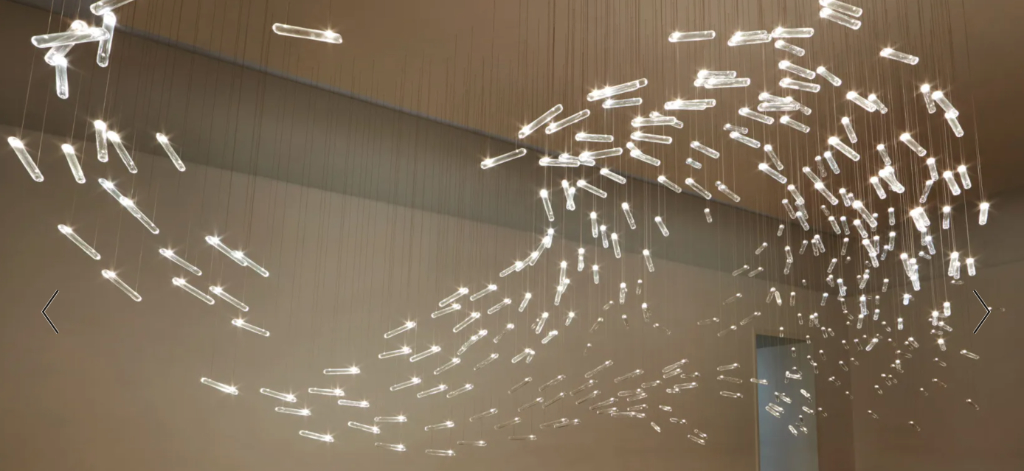
You both have a background in design, and your practice focuses on creating interactive installations, sculptures, objects and films, blending the latest science fiction-inspired hi-tech developments and their poetic imagery. How and when the interest in the different disciplines and media comes about?
From our childhood, we have been fascinated by how, in nature (Lonneke) and science fiction (Ralph), solutions can be discovered that tell us that we are more part of the natural system than we often realize. How we behave, make choices, what we develop, what we make, what drives us and why we feel certain things are very much reflected in everything that we consider nature around us. Almost everything on earth has the same drive and cycle of existence.
We are all part of the same evolution. Technology, Architecture, Art, and everything we develop, successes or failures, exist in the same system of striving towards progress and come from a driving force that makes us want to rise above ourselves. We believe that we can recognize ourselves in moving natural phenomena.
They might go faster or slower than our own but have the same patterns. We can tune into these surroundings and become part of the environment. In this way, we are able to establish connections between man and environment that are more meaningful, and it makes us aware of the role we can play, of the direction we are working towards and of the media we choose to work with.
One of your projects is a kinetic lighting installation of moving glass tubes that you showcased in Iris Van Herpen’s Syntopia collection. Syntopia tried to replicate the feathers and soundwave patterns of birds. Could you tell us the intellectual process behind your installation?
The installation ‘In 20 Steps’ was originally developed for an old glass factory on Murano for the Biennale in Venice in 2015. For Iris van Herpen’s show, we adapted the sculpture’s behaviour and choreographed it to blend with the models’ movements. The sculpture, the light, the women and Iris collection became one organism.
The 20 delicate glass wings of which the spatial kinetic installation is constructed represent -in an abstract way- the principle of flying, or is it the movement of the sea? Isn’t almost every movement, whether it is in nature or generated by technology, based on the same physics? The glass emphasizes the fragility of the movement and of nature itself. The movements break the natural light in the glass and transform the sculpture into an almost liquid state of being.
Drifter is one of your acclaimed projects. It presents a rotating massive concrete block that poetically appears to float in space, defying all sense of gravity. What were the biggest challenges you faced in its development?
Making a block of concrete float is not really possible within the law of physics. Ignoring this fact and making this happen was our biggest challenge. And then to make it so that the people, including ourselves, believe it when we see it. Luckily it was, in the end, quite easy to connect with the block, as it became a personality with its own will and specific behaviour.
It turned out that this floating block felt much more natural to us than when you put it on the floor, turning it back into a lifeless object. This makes us question if architecture and our built environment should be lifeless. Will we, not all feel better when, like in nature, everything around us is moving and constantly changing?
Your practice also encompasses a marked exploration of different materials. There’s a large amount of research on Future materials, such as auto-healing concrete and a myriad of biomaterials. What is the most exciting of these new materials and material combinations for you?
We like to use raw materials in their most honest and purest appearance, so no artificial colours or lacquered finishes. We like to show our technology and not hide printed circuit boards or motors under a surface. The idea is that you see the technological components, but do not feel that it feels distant or inhuman. But most of all, we like it when a material has hardly any materiality. Like clouds, hairs, waterdrops and air. We are getting closer to the substances that man can make. Very exciting!
Where do you see taking your work into?
Our work strives to re-establish the connection between humans and Earth. The performative character of our work is increasing. We develop experiences, animated spaces and choreographed sculptures that unite people deeply and allow them to get in tune with themselves, their environment and other people. Light and movement play a big role in this process. We keep on exploring this topic deeper and expand to outdoor spaces and natural environments to create the biggest impact.
What is your chief enemy of creativity?
Being in control and lacking time, sleep and health.
You couldn’t live without…
Plants, the sun and love.

